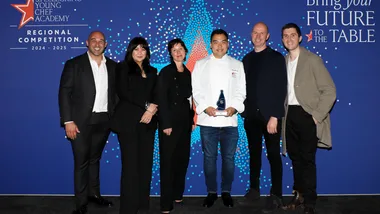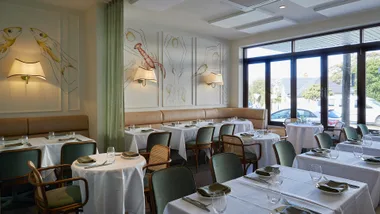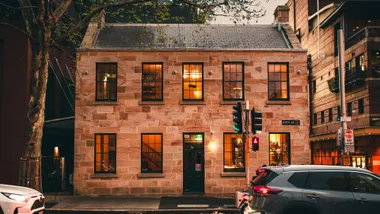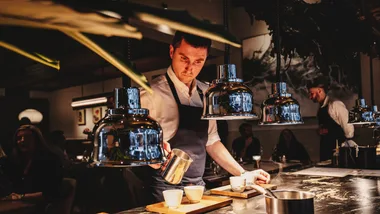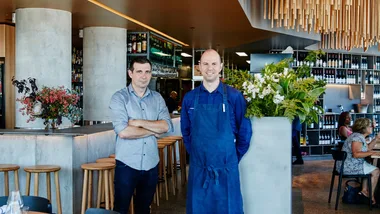“I’m better at eating than I am at cooking,” says George RR Martin. The author of the best-selling A Song of Ice and Fire books, which have been made into the wildly popular HBO series Game of Thrones, is in Australia this week, speaking at the Sydney Opera House (“I just wish I’d sung something while I was up there,” he quips), among other engagements. Gourmet Traveller chief restaurant critic Pat Nourse caught up with him to talk about one of the more richly painted aspects of Westeros and the world Martin has created. No, not the violence (nor the sex); the food.
Check out our most Game of Thrones recipes
“I don’t cook but I eat,” Martin says. “I’m a terrible cook. I mean, I can make breakfast – eggs or something – but I can’t really cook.” It’s something of a surprise to hear this when the world of Game of Thrones has such a detailed culinary life. In chilly Winterfell, Lady Catelyn Stark breakfasts on “hot bread, butter, and honey and blackberry preserves, a rasher of bacon, a soft-boiled egg, a wedge of cheese, a pot of mint tea”. At the court down at King’s Landing it’s trout in a crust of crushed almonds or wrapped in bacon, peaches in honey and cream swans. The ascetic Aeron breaks his fast on “a broth of clams and seaweed cooked above a driftwood fire”, and readers of the series soon even become acquainted with its drinks – the red wines of Dorne, Tyroshi pear brandy and the fabled Arbor Gold.
The books have spawned a website dedicated to its food, the Inn at the Crossroads, which in turn produced a cookbook, A Feast of Ice and Fire. Could all of this really have sprung from an author who, as he says in his foreword to the book, thinks it safer to turn to his local café rather than brave the kitchen?
“Well, I like to eat,” says Martin. “And I have some medieval cookbooks and some histories of feasting through the ages and they’re great resources. You want to give that sense of verisimilitude. You don’t want to just say ‘they attended a feast’; you want to know what was served, what it tasted like, what it smelled like.” For the most part, he says, the food in the books and show is based on real medieval cookery, a period he finds particularly interesting. “A lot of the spices we take for granted – pepper, nutmeg and cinnamon – were either very rare or very expensive. Saffron cost more than gold in the Middle Ages, if you could get it. So they made do with other things. They had very elaborate presentation, or at least the royalty did. They’d serve a bird in its plumage, you know – take the bird, take all its feathers off, cook the bird, then put all the feathers back. Spun-sugar castles, dragons, everything.”
We can’t leave Martin without pressing him for his thoughts on which of his characters keeps the best table. Would it be the wealthy, sun-loving Martell family with their Mediterranean-leaning flatbreads, olives and spiced snake? The sensualist Tyrion Lannister? Or the moveable feast of the court of Daenerys Targaryen with its duck eggs and dog sausage?
“Oh, Illyrio Mopatis, the magister, no question. Just watch out for the mushrooms.”
 Courtesy HBO
Courtesy HBO
